One of the things that surprised me in my research for Juliette Gordon Low: The Remarkable Founder of the Girl Scouts was Robert Baden-Powell’s lovely gesture of sharing his own sculpting teacher, Edouard Lanteri, with Juliette Low when she was in need of an instructor. Yet even more intriguing is the fact that Juliette would have known Lanteri’s work because of one serendipitous detail: Juliette’s brother-in-law George Coke-Robertson had commissioned Lanteri to create a memorial to his deceased wife, Harriet Low, two decades earlier. The marble bust sits today in the beautiful Anglican church in Widmerpool, England, where Harriet lies at rest–and where Juliette’s husband, Willy Low, does too.
Who was Edouard Lanteri?
On faculty at the Royal College of Art when Juliette Low and Baden-Powell studied with him, Lanteri was born in France in 1848, but had become an English citizen. Lanteri had studied at the the Ecole des Beaux-Arts. He was a friend and a teacher of the great sculptor Auguste Rodin, who once called Lanteri “my dear master” in a foreword to one of his books.
Prof. Lanteri insisted that all his own pupils began by “copying firstly plaster casts of antique and Renaissance masterpieces.” [1] He had done a series of anatomical studies–called ecorches–for his students to use to understand how the human body was constructed and able to move. Drawing the skeleton and the musculature of the body was required of his classes at the Royal College of Art. [2]
Once students had mastered plaster casts and ecorches, they could then study from life. Juliette was not Lanteri’s first or only female pupil, and while men far outnumbered women in the field of art, it was becoming less unusual by the early twentieth century for women to train using live models.
One day, Juliette’s experience with a model in Lanteri’s studio moved her to an impulsive act of charity. She could not focus on her sculpting, so convinced was she that the emaciated young model had “nearly fainted” from apparent starvation. The next night, Daisy brought a “thermos bottle of hot soup and thick sandwiches of meat and bread,” and half a quart of milk, all of which the model ate so gratefully that she “grew fat” as even Daisy watched. Her worry for the young woman prompted her to share the vignette in a letter to her sister Mabel, but, keeping such deeds mostly secret, she ordered Mabel not to pass that part of her letter along for their parents to read. [3]
Lanteri also encouraged artists-in-training to pay close attention to life around them. Like military scouts or novelists, students were to observe in detail interesting people, phenomena, and situations so they could sketch them from memory at the day’s end. This almost certainly appealed to General Baden-Powell, who had been schooled in such close observation as a scout in the British army.
When Baden-Powell and Juliette Low were under his tutelage, Lanteri had just completed the third volume of his Modelling: A Guide for Teachers and Students. One reviewer said of his books that Lanteri was ” a sculptor of unusual ability” who “knows exactly what is necessary for the young worker who is acquiring the foundation of sound knowledge, upon which success in later life very largely depends; and he has the rare gift of being able to impart to others something of his own enthusiasm and understanding.” [4] He had also overseen some former students at the Royal College as they created the enormous sculptures for the facade of the Victoria and Albert Museum. [5]
One of Prof. Lanteri’s students summed up the regard he called forth: “It is this considerable gift to carry his theories into effect that makes Mr. Lanteri so supreme a master. As a teacher he has no superior, and many a successful sculptor of to-day owes much to his untiring energy, encouragement, and interest, such as he takes in all who have the good fortune to come under his care.” [6]
Another pupil called him “singularly endowed with the capacity for inspiring students with a passion for their art, and for securing from successive generations of them their admiration and affectionate esteem. It may be believed that a very large proportion of the most successful British sculptors of to-day who are not more than middle-aged owe to Professor Lanteri much of the success the have achieved. [7]
Lanteri became known as a founder of a British school called “New Sculpture,” known for its “dynamic naturalism of the body.” [8] When he died, in 1917, his students mourned, and they knew that they were his legacy–as there were many more of them than there were works of art actually created by Edouard Lanteri. It must have been a wonderful thing for Juliette Low and Robert Baden-Powell to have been in the presence of such a selfless, generous, and talented teacher.
[1] Catherine Moriarty, The Sculpture of Gilbert Ledward (Aldershot: Lund Humphries/Aldershot, 2003), 27.
[2] Stuart MacDonald, The History and Philosophy of Art Education (Cambridge: Lutterworth Press, 1970), 51.
[3] Juliette Gordon Low to Mabel Gordon Leigh, 23 November 1911, Georgia Historical Society, Gordon Family Papers MS318/14/158. This was probably but not definitively Lanteri’s sculpting class.
[4] “Book Review,” The Studio, vol. 26 )1902), 227.
[5] John Physic, “Decorative Sculpture on the Exterior of the Victoria and Albert Museum.” First published in the V&A Masterpieces Series in 1978. Available here: http://www.vam.ac.uk/collections/periods_styles/features/history/decor_sculpt/index.html
[6] Student quoted in Marion Harry Spielmann, British Sculpture and Sculptors of Today (London: Cassell and Company, 1902), 128.
[7] Spielmann, 1.
[8] Ana Carden-Coyne, Reconstructing the Body: Classicism, Modernism, and the First World War (Oxford: Oxford University Press, 2009), 139.
For more photos of Widmerpool, including the church and Willy Low’s gravesite, see Clive Hanley Photography.


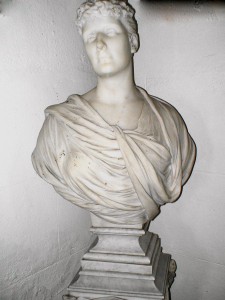
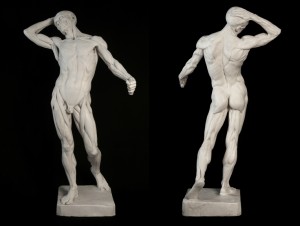
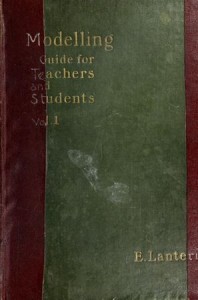
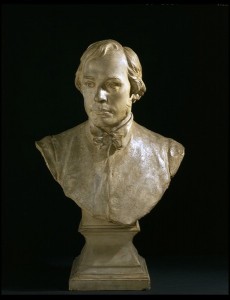
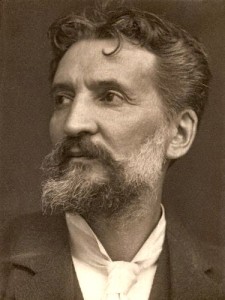
I love this stuff. The insight into the lives of our founder(s) compounds itself. Surprised that a Thermos bottle is refer ed to. Was Thermos a thing or a brand? Anyway, I guess the problem of thin models goes way back. Thanks Stacy.
Hi, Sue! According to the Thermos Company, their first product was invented in 1892–so that would be just under a decade before the vignette I mentioned. Remember that Daisy Low loved anything new and cutting edge! Here’s the Thermos Company site: http://www.thermos.com/history.aspx
Thanks for writing!
Are you related to Juliette by chance? Was wondering what got you interested in her life, for a start!
Thanks for writing! My interest in Juliette Low springs from the very first mention I heard of her in my Brownie circle. Her courage and conviction made an impression on me then, and I am honored and grateful to have been able to write her biography.
I went back and read what you had written as to why these women had been so interesting to you! I love to find out as much as I can about all of my ancestors, I never give up, and I especially love old photos.
Patsy–I am not in any way related to Juliette Gordon Low! I do applaud your genealogical research. It’s usually a difficult but rewarding path–and I wish you the best of luck!
Just finished the last page of the last chapter – what a lovely and insightful look at a lovely and indomitable woman.
Thank you for all your hard work and talent.
I look forward to seeing you again in the DC area and getting my copy of Juliette Low and Alice autographed.
Julie–how very kind of you! Thanks for writing. I am thrilled that you enjoyed my biography of Juliette Gordon Low. She was “lovely and indomitable.” I agree wholeheartedly.
The Ecorchè by Lanteri that you see on the picture above is made by FeliceCalchi (and the photo too) an Old Workshop of plaster cast in Rome with skilled craftsman.
For whom are interested this is the web link: http://www.felicecalchi.com/en/mnu-anatomical-studies/76-mod-a1.html